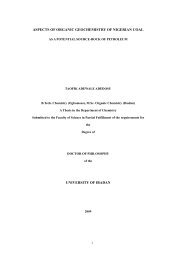View/Open - TWAS & OWSD Thesis Repository Home
View/Open - TWAS & OWSD Thesis Repository Home
View/Open - TWAS & OWSD Thesis Repository Home
Create successful ePaper yourself
Turn your PDF publications into a flip-book with our unique Google optimized e-Paper software.
virulence, has made race-specific resistance genes almost useless in disease control<br />
(Andrivon, 1994). With the lack of durability of resistance with single dominant<br />
genes that result in hypersensitive resistance (HR), it is probable that new resistance<br />
genes that result in HR will not be durable. More emphasis is being given to transfer<br />
of quantitative trait resistance to commercial cultivars of tomato.<br />
Wild S. pimpinellifolium is the original source of the race-specific resistance<br />
genes Ph-1, Ph-2 and Ph-3 (Gallegly, 1960; Ignatova et al., 1999). Resistance to late<br />
blight has also been observed in wild S. habrochaites (Lobo and Navarro, 1987;<br />
Kim and Mutschler, 2000; Abreu, 2005). An interspecific F1 progeny from S.<br />
lycopersicum L. cv. Santa Clara x S. habrochaites f. glabratum accession BGH 6902<br />
exhibited resistance to numerous P.infestans isolates under the field conditions of<br />
Viçosa, MG state (Abreu, 2005).<br />
The choice of parents for use in a plant breeding program is one of the most<br />
important decisions that a breeder makes (Borem and Miranda, 2005). In tomato, the<br />
methodology presented by Griffing (1956) is quite used. This methodology which<br />
estimates the general and specific combining abilities of the parents in a diallel cross<br />
was developed for four types of diallel tables corresponding to four methods. The<br />
most commonly used is method 2 which includes the n parents and the [n(n-1)/2]<br />
crosses in the generation F1 without reciprocal crosses and the second in use is<br />
method 4 which involves only the group of F1s without parents and reciprocal.<br />
In a hybridization program, selection of parents on the basis of per se<br />
performance alone is not a sound procedure since superior lines identified on the<br />
basis of per se performance may result in poor recombinants in the segregating<br />
generations. Therefore, parents should be chosen on the basis of their combining<br />
ability. The general combining ability (GCA) characterizes the average performance<br />
of a genotype in a series of hybrids combinations and is mainly associated with<br />
additive gene action. While, the specific combining ability (SCA) is used to<br />
characterize the performance of a specific hybrid combination in relation to the<br />
average of its parents and is predominantly associated with genetic effects involving<br />
3


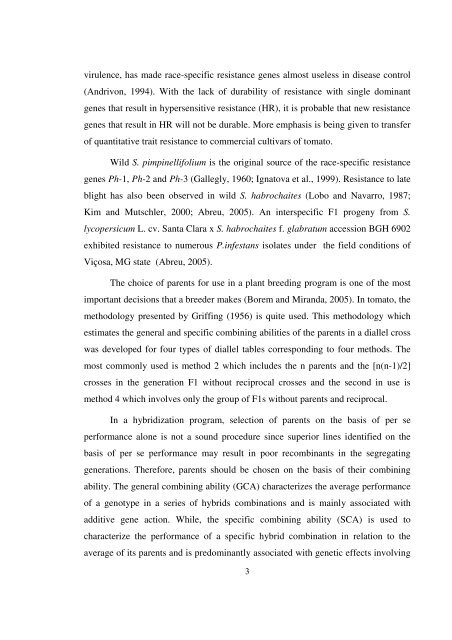

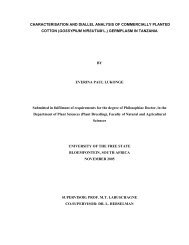


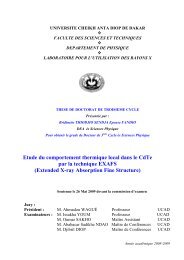
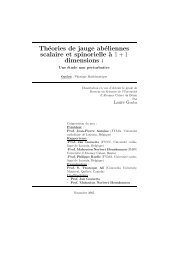
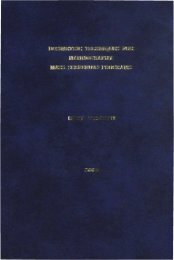

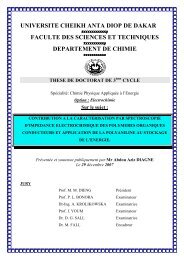
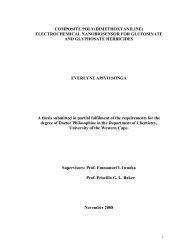

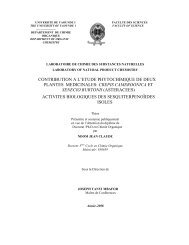
![SYNTHESIS AND ANTI-HIV ACTIVITY OF [d4U]-SPACER-[HI-236 ...](https://img.yumpu.com/30883288/1/190x245/synthesis-and-anti-hiv-activity-of-d4u-spacer-hi-236-.jpg?quality=85)
